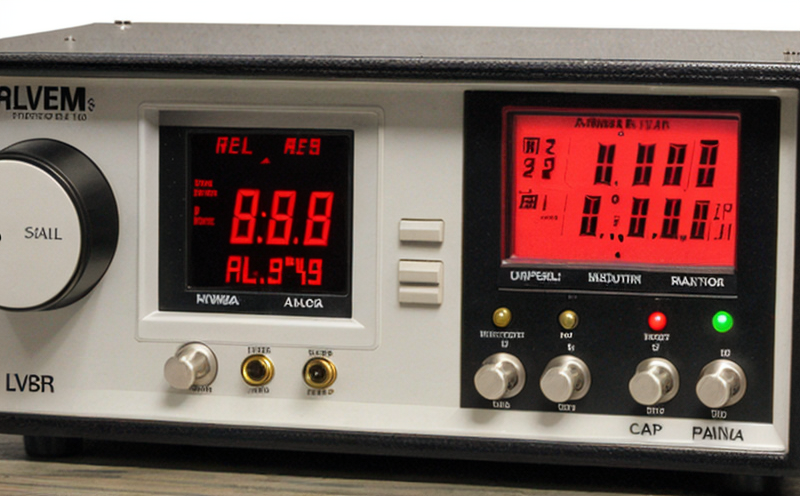ISO 18589-2 Calibration of Gamma Spectrometry Instruments
The calibration procedure for gamma spectrometry instruments as specified in ISO 18589-2 is a critical process that ensures the accuracy and reliability of radiometric measurements. This standard provides a detailed framework for calibrating gamma spectrometers to ensure they meet performance requirements and can be used with confidence across various sectors including healthcare, environmental monitoring, nuclear industry, and research laboratories.
The calibration procedure outlined in ISO 18589-2 involves the use of reference sources that emit known energies and intensities. This allows for the determination of the spectrometer's response to these gamma rays, which is crucial for accurate measurement and interpretation of results. The standard specifies the types of sources that can be used for calibration purposes as well as the conditions under which they should be employed.
The process begins with selecting appropriate reference sources based on the energy range of interest in the application context. For instance, if the spectrometer is intended to measure low-energy gamma rays (e.g., those emitted by medical isotopes), then a source emitting energies within this range must be used for calibration. High-energy gamma rays would require different reference materials.
Once selected, the sources are placed at specific positions relative to the detector in order to simulate real-world conditions as closely as possible during calibration. This positioning is done following precise guidelines provided by ISO 18589-2 to ensure accurate determination of instrument performance metrics such as efficiency and resolution.
A key aspect of this standard is its emphasis on traceability—ensuring that all measurements made using calibrated instruments can be traced back to internationally recognized reference standards. This helps maintain consistency across different laboratories and ensures comparability of results obtained from various sources around the world.
The calibration procedure described in ISO 18589-2 also includes methods for assessing linearity, energy resolution, efficiency, dead time correction factors, and other important parameters that affect overall instrument performance. By following these procedures rigorously, users can ensure their instruments are operating within specified limits and producing accurate data.
It is worth noting that while ISO 18589-2 provides a comprehensive guide for calibrating gamma spectrometers, it does not dictate the exact values or tolerances associated with each parameter. These may vary depending on specific application needs and local regulations. Therefore, laboratories should consult relevant national standards or industry guidelines when interpreting results.
In summary, ISO 18589-2 offers a robust framework for ensuring accurate and reliable gamma spectrometry measurements by providing clear instructions on how to perform calibrations properly using appropriate reference sources and methods. Adherence to this standard helps maintain high-quality standards in radiometric measurement practices across diverse fields such as medicine, industry, research, and environmental protection.
Applied Standards
The application of ISO 18589-2 extends beyond mere calibration procedures; it encompasses a broader spectrum of quality assurance practices aimed at maintaining the integrity of radiation detection systems. These standards are particularly important in ensuring that gamma spectrometry instruments comply with international norms set forth by organizations like the International Organization for Standardization (ISO).
- ISO 18589-2: This particular standard focuses specifically on the calibration aspect but implicitly supports broader quality control objectives.
The use of these standards ensures that laboratories and facilities adhering to them can produce consistent, accurate results which are comparable across different regions. Compliance with such standards enhances trust among stakeholders who rely heavily on precise measurements provided by gamma spectrometry instruments. Additionally, it facilitates effective communication between professionals working within the same field by establishing a common language based on universally accepted criteria.
Quality and Reliability Assurance
The quality and reliability of radiation detection systems are paramount in ensuring accurate measurements across various applications. In order to achieve this, rigorous adherence to international standards such as those outlined in ISO 18589-2 is essential.
One key element of maintaining high-quality standards involves regular recalibration of gamma spectrometers according to established protocols. This process not only ensures that instruments continue to meet performance requirements but also helps identify any potential issues early on, allowing for timely corrective actions. Regular calibration schedules should be tailored based on the specific needs and usage patterns of individual facilities.
Another crucial aspect is implementing robust quality control measures throughout all stages of instrument operation—from initial setup through routine maintenance activities. This includes thorough documentation practices that allow easy tracking of changes over time, ensuring accountability within the organization responsible for managing these systems.
Furthermore, continuous training programs for personnel involved in operating and maintaining gamma spectrometry instruments contribute significantly towards enhancing overall proficiency levels among staff members. By staying updated on advancements in technology and best practices recommended by relevant bodies like ISO, employees can better understand how to optimize performance while minimizing errors during routine operations.
In conclusion, a comprehensive approach encompassing regular calibration, strict quality control procedures, and ongoing education initiatives plays an integral role in sustaining the accuracy and reliability of gamma spectrometry instruments used across diverse industries. Such efforts ultimately lead to more trustworthy results which are vital for making informed decisions based on measured data.
International Acceptance and Recognition
Countries worldwide recognize ISO 18589-2 because it establishes consistent protocols that enhance trust among stakeholders operating in this field. Compliance with these standards is often a prerequisite for regulatory approvals and certifications required by governmental bodies.
Many countries have adopted ISO 18589-2 as part of their national regulations governing radiation safety and protection. This ensures uniformity across borders, facilitating international collaboration in areas where accurate measurement plays a critical role.
The widespread acceptance of this standard among leading institutions further reinforces its importance within the scientific community. It serves as a benchmark against which other calibration techniques can be evaluated, promoting best practices globally.
By aligning with ISO 18589-2, organizations demonstrate their commitment to excellence in radiometric measurement processes. This fosters confidence among clients and partners who depend on accurate results generated by these instruments for critical applications such as medical diagnostics or environmental monitoring projects.





